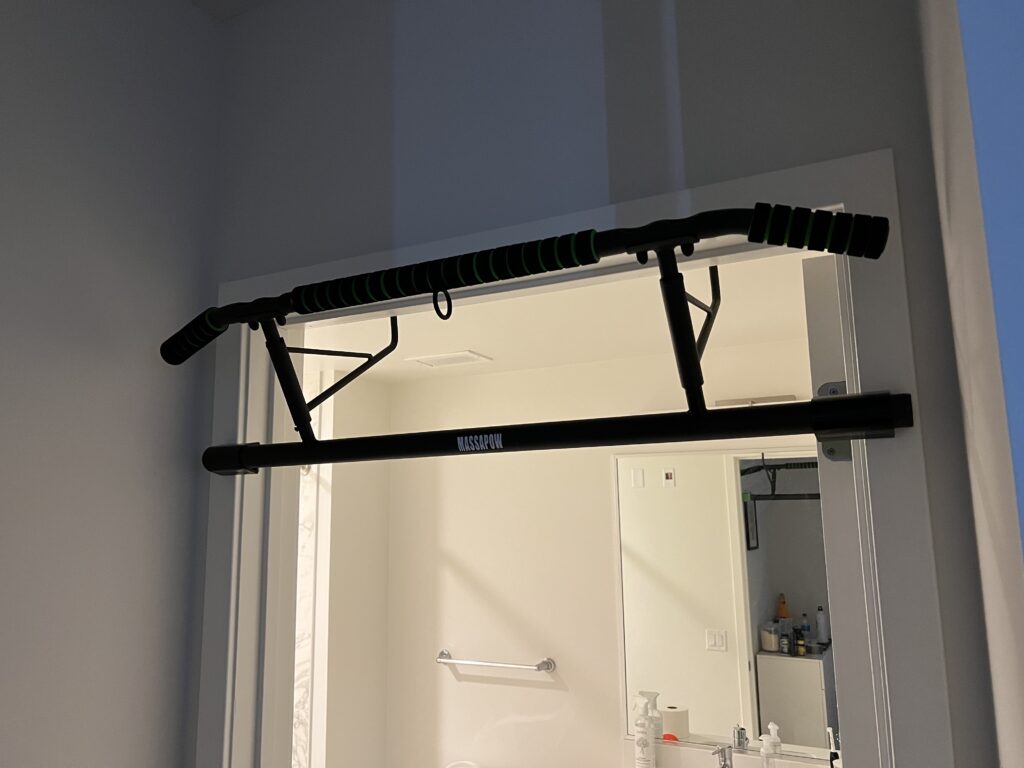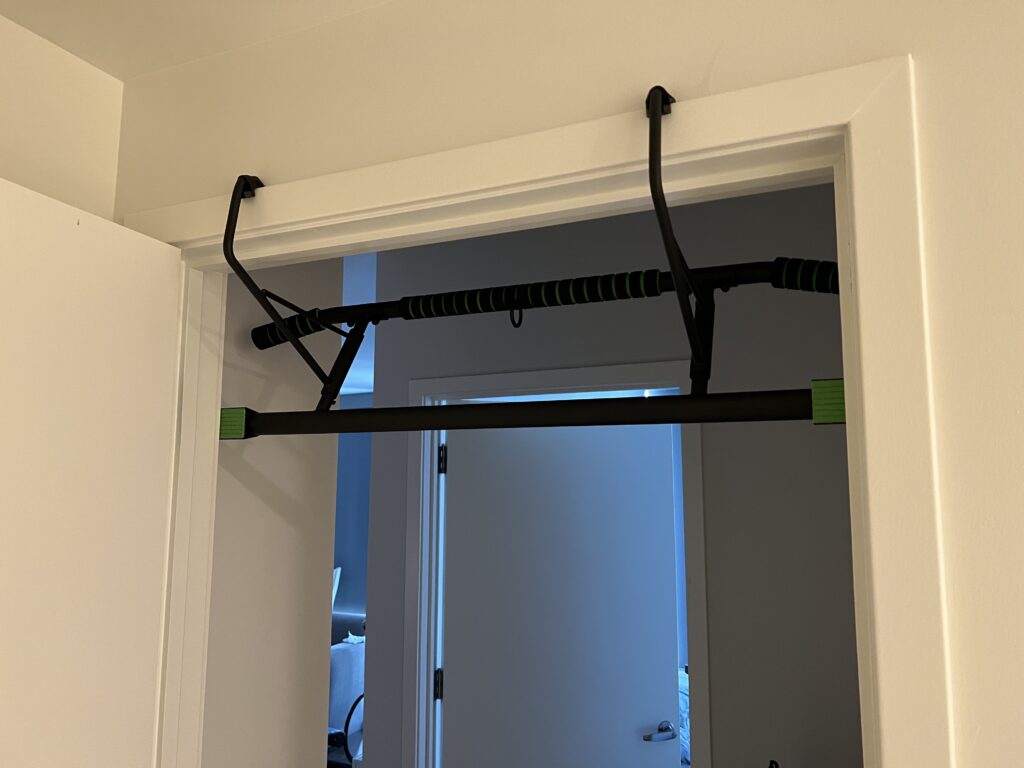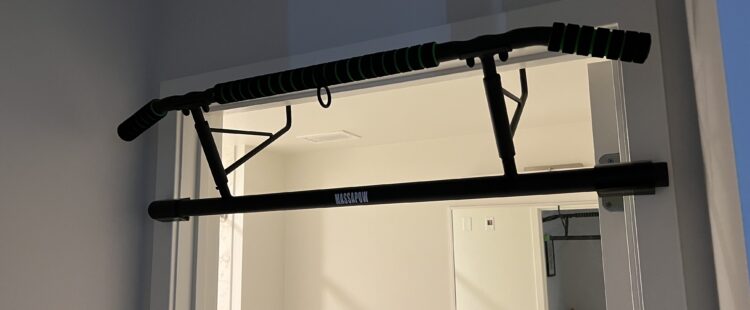Disclosure: I may earn affiliate revenue or commissions if you purchase products from links on my website. The prospect of compensation does not influence what I write about or how my posts are structured. The vast majority of articles on my website do not contain any affiliate links.
During the pandemic, I’ve been spending a lot of time at home. Many gyms have temporarily closed, and the gym I visited for years in downtown Chicago disappeared without a trace. There’s been a rush to construct at-home gyms of varying levels of seriousness. Whether that means purchasing a Peloton or Keiser bike, free weights or barbells, or something more niche, sales of exercise equipment have skyrocketed. Especially back in 2020, some of the most popular gear, such as adjustable dumbbells, was selling at almost a 50% premium over MSRP.
The most cost-effective, versatile, and common first purchase is usually a kettlebell or pull-up bar. With most pull-up bars, you can do chin-ups, pull-ups, ab exercises, and also some pulley work. There’s a natural inclination toward jumping up and trying to lift your body weight. Whoever–wherever–when people encounter a pull-up bar, they want to try it out. To men, women, toddlers: it’s a universal attraction. I say that it’s the single best piece of equipment you can own.
How Do Pull-Up Bars Work?
Pull-up bars for the home take advantage of the support provided by the residential doorway. Doorways are sturdy. So sturdy, in fact, that it’s not uncommon to see lonely door frames still standing when a tornado rips apart a house. The most common design for this equipment involves a long, sturdy bumper which sits on top of the frame opposite of where the grips are. You lock that bumper flush with the frame and pull down, and most pull-up bars will feel incredibly sturdy. The added stability comes from front pads, wider than the frame itself that ensure that forward/backward force doesn’t result in any unexpected movement.
There are other bar configurations. Some are meant to be screwed in to the door frame, some simply use tension in the frame using a locking mechanism (don’t buy these), some have their own support (and thus are better placed in an actual gym). The classic type of bar, which I’ll cover in this article, is the most desirable because it supports the most weight (usually at least 350 pounds), takes up very little space, can be used for push-up support and (usually) pulley work, and requires no permanent changes to an apartment or home that you might be renting.
The Problem: Wide Door Frames
Interior door frames are typically between 28 and 32 inches. Considering this, most pull-up bars have a cross-bar and pads that extend to roughly that length. These have a maximum length because, if the cross-bar is too long, it may bump into the nearest corner and thus not fit into the door frame. Think about all of the doors in your home. Many of them, on one side, are just a few inches away from a perpendicular wall. Pull-up bars are manufactured to fit the general case, in which there’s not much extra space.
While I’ve been living in Chicago, I’ve noticed a clear trend toward wider door frames. New constructions tend to have higher ceilings, wider doors, windows that bathe you in sunlight, and cheap vinyl floors that are as thin as possible. When it came time to buy a pull-up bar in my current apartment, I realized that I would have a problem. My frames are extremely wide.
My bathroom and bedroom door frames have typical depth but are 36 5/8″ wide.
It’s too easy to be hoodwinked by Amazon recommendations or even by listings that mention that the bar fits a “wide frame.” In all cases, you have to check the actual dimensions. You can thank me later, but I’ve done that work for you.
The Pull Up Bar That Actually Fits Wide Doorways
After a significant amount of research, I decided to purchase the MASSAPOW pull up bar. Most importantly, it actually fits in my ridiculously wide door frame. I’ve owned it for more than six months now, and my bulging back muscles are a testament to the fact that it works as intended.

The length of the cross-bar is 39.37″, according to MASSAPOW (see other dimensions here). Even with my wide frame, there is about 1.5″ of overlap on each side. This is more than enough. It’s sturdy, locks into place, and is easy to remove.

Here is a view from the opposite side. To accommodate both wide and deep doorways, this bar has a tension spring system and uses two small support arms to balance itself. Though I’d imagine the springs, at some point, will cause some squeaking, another benefit of this support system is that there is even less than usual damage to the door frame or discoloration of the wall above the frame. Here you can plainly observe a clean wall.
My Review of the MASSAPOW Bar
The MASSAPOW pull up bar is a sturdy piece of equipment meant to fit doorways that are unusually wide and deep. This said, provided you have about 40″ or 100cm of clearance between the farthest end of the frame and your closest wall, this will also fit regular-sized frames. Unless the space is spectacularly tight, this will fit, and it’s a good investment for that reason because you never know when you’ll move into a place like the apartment I’m in where the frames are 36.5+ inches!
There are arms with plastic caps that wrap around the door frame and then large rubber pads that rest against the front of the door frame. The bottom bar is just for support, though presumably it could be used for weight-bearing activities. The main part of the bar features two grips, a traditional pull-up/chin-up grip and a downward-angled wide grip. The latter helps isolate lats and mid-back muscles while slightly reducing force through the wrists. This bar does not have a neutral grip, those two bars that sit perpendicular and jut out toward you.
The bar has solid construction and it’s easily the most substantially-built at-home bar I’ve ever used. This goes back to high school, I’ve probably used about 7 different bars. The is the best, bar none (ha-ha). The grips themselves have held up well but under constant use of a year or more, you’d probably want to replace them as the foam would get a bit worn out. Personally, I switched to using fingerless gloves to prevent callousing.
An additional feature is that there is a ring welded to the center of the bar which could be used for resistance band and pulley work. These accessories are included with the purchase.
Final note: due to the different construction here with the angling of the bar, the grips hang closer to the top of the frame. If you have a wide or deep frame, there’s a chance it’s taller, as well. My frames are about 7′ high, I’m 6′ tall. Based on my hand position, I can estimate that if I was under 5’6″, I would have to jump up to grab the bar.
Are There Alternatives?
This is usually the part where bloggers shill for other random products that may or may not be related to what you’re searching for. This tendency has basically ruined the internet because you just have these long irrelevant lists where someone is trying to sell you everything so you can almost never get the information you need or identify the best product. I’m not going to go down that path. I’m not going to bombard you with links just in the hopes you buy something. This is a specialized use case and this premium product exceeded all expectations. My only other recommendation is actually a plea: do not buy any of the lateral-tension pull-up bars. They’re cheaply made and, best case, one will damage your door frame. Worst case, one will dislodge from the doorway while being used and you’ll break a vertebrae or tailbone. Don’t risk it.



